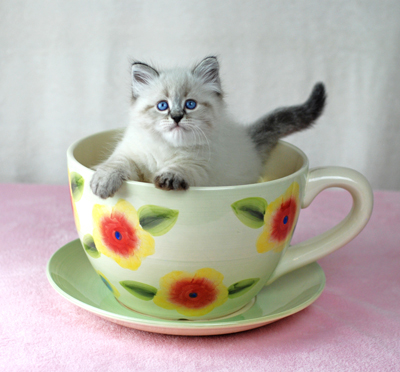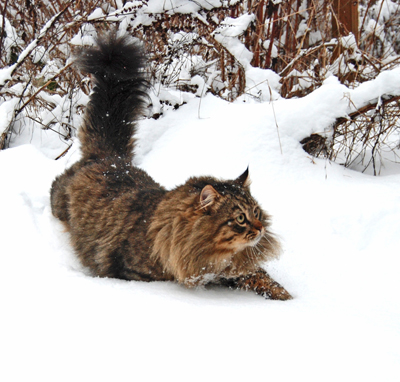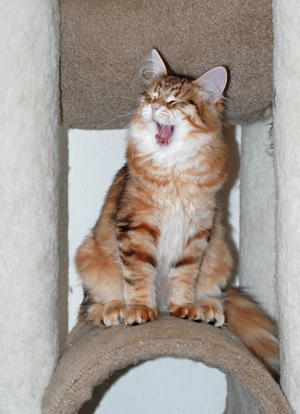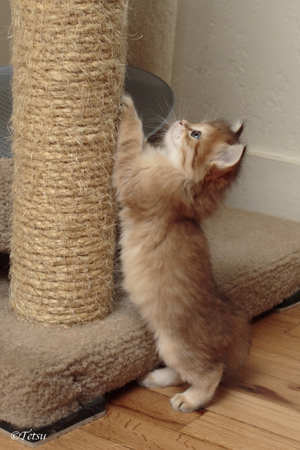Cats scratching and clawing your furniture and drapes is something we all want to avoid. Providing plenty of appropriate scratching stations for your cat and teaching it to use them is the long term solution.
Glorious Siberians does not permit declawing for many reasons:
1. Scratching is necessary
The gripping, pulling, stretching exercise a cat gets through scratching is essential to the development of his skeletal and muscular structure. It also provides stress relief.
2. Declawing is NOT Just Nail Trimming
Declawing is the surgical amputation of the first joint of the cat’s toes. Whether this procedure is accomplished with a scalpel, a guillotine-type cutter or a laser, it is major surgery, and not to be undertaken lightly.
3. Declawing Does Nothing to Benefit the Cat
You will sometimes hear the disclaimer, “It’s better than putting him to sleep.” This is a fallacious argument, and usually offered only to soothe the owner’s conscience. Only the cat’s owner can make the decision to kill her cat because of scratching problems. He or she can also make the decision to let him keep his toes. Unlike neutering, which does benefit the cat, both health-wise and behavioral-wise, declawing simply does nothing positive for the cat.
4. Declawing Robs a Cat of His Chief Weapon of Defense
A typical counter-argument is, “My cat is indoors-only.” Even indoor cats sometimes manage to escape. A declawed cat does not stand a chance against a large dog, a bigger cat, or a predator. His avenues of escape are greatly compromised without claws to scale a tree or fence. Although he still has teeth, by the time he gets in close enough to bite, it may be too little, too late.
5. Declawing is Painful Surgery
Think of it as 10 amputations (if only the front feet are declawed). Pain meds may help initially, but phantom pain may last for weeks or months, as nerve endings heal. Dr. Nicholas Dodman describes the pain following surgery: “Unlike routine recoveries, including recovery from neutering surgeries, which are fairly peaceful, declawing surgery results in cats bouncing off the walls of the recovery cage because of excruciating pain.”
6. Declawing May Lead to Litter Box Problems
Declawed cats often associate the pain when digging in litter with the litter box itself, and will avoid it, choosing softer carpeting instead.
7. Declawing Sometimes Leads to Biting Problems
When cats lose their ability to give a quick warning scratch, they will often resort to their second line of defense: a good, hard bite. The cat’s owner may sometimes find himself the victim, just when he thinks his cat is enjoying a petting session.
8. Cats Need the Exercise Their Claws and Toes Provide a Vital Role
Watch a cat stretch, whether horizontally on a carpet or vertically with a tall scratching post. He will grab the carpet or sisal with his claws, using the resistance to pull and stretch his muscles. Cats’ claws actually play a large and positive role in their amazing muscle tone and agility.
9. Altered Gait May Lead to Later Joint Problems
Domestic cats are digitigrade, meaning they walk on their toes. Walking with an altered gait because of the lack of the first digit of the toes can affect all the joints of the leg, resulting later in arthritis of the hip and other joints.
~~~~~~~~~~~~~~~~~~~~~~~~~~~~~~~~~~~~~~~~~~~~~~~~~~~~~~
Appropriate Scratching link
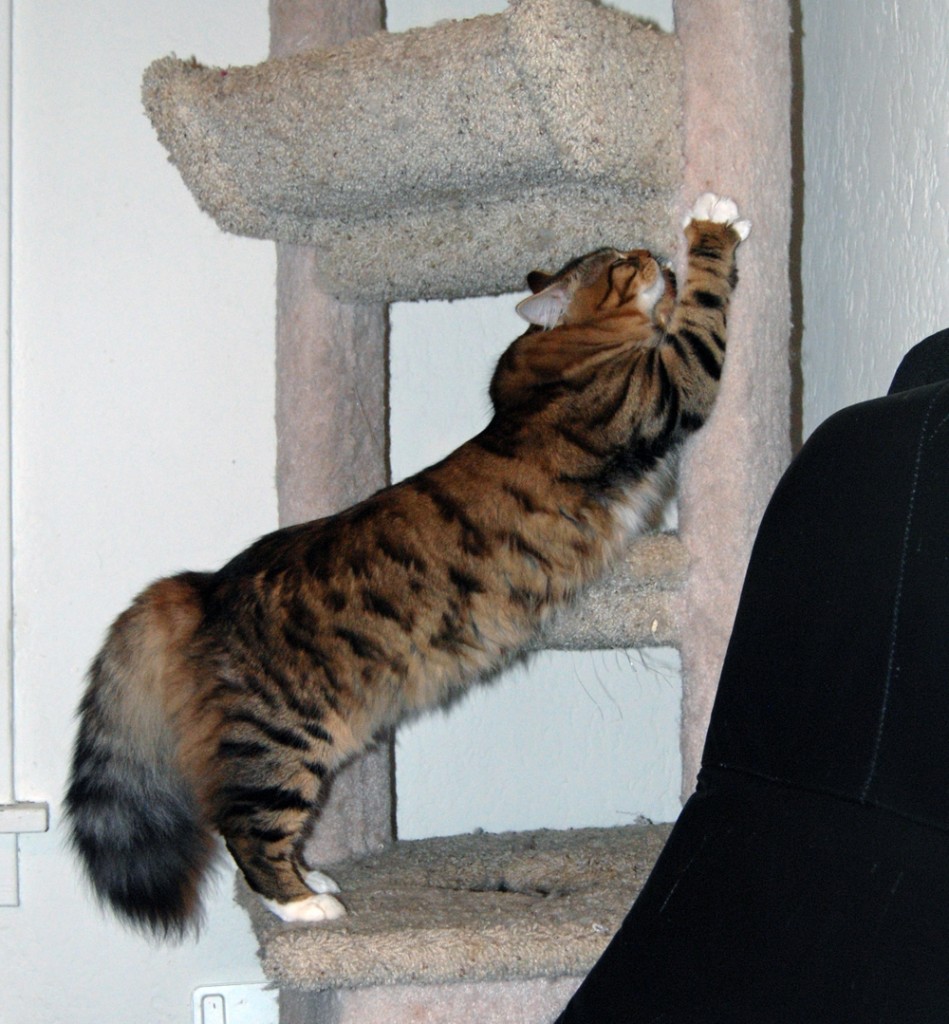
Here is a link to an informative article and video:


